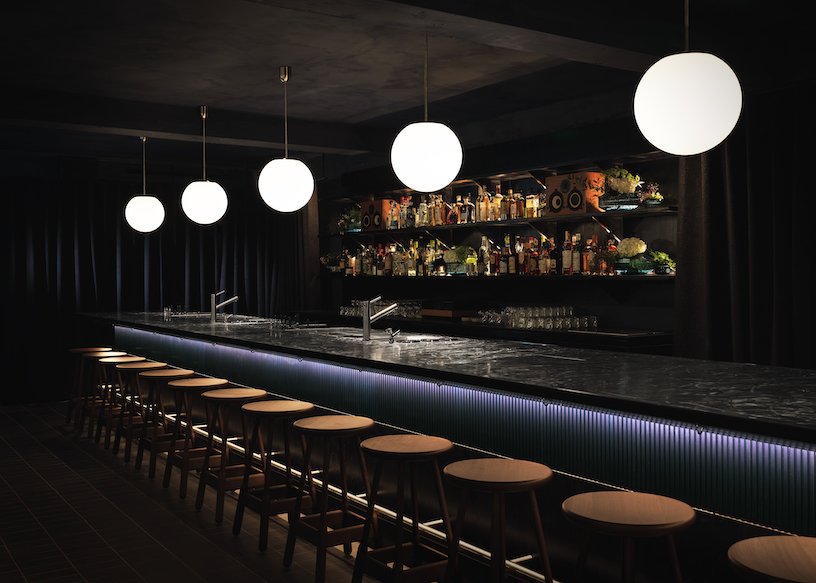Designing for People
Sam Millin talks about the ways bar design is changing to promote human connection.
What a year. Two years almost, but 2021 felt harder than 2020, probably because the weight of inevitability hung heavier. This pandemic is really starting to suck the fun out of life but thank the stars, it looks like there’s some light at the end of the tunnel that’s hopefully not a false dawn.
Human connections. I crave talking to strangers. I haven't had a really intense two-minute conversation with an equally enthusiastic stranger while waiting at the bar in a long time, and I miss it. These fleeting interactions with people that bars accommodate are a phenomenon, a part of any night out in a busy bar. Encouraged by a little alcohol, people get a chance to present themselves at their witty best, and although this is not always achieved, because the meetings are brief, it’s of little consequence in the grand scheme of things.
“At Behind Bars, we’ve seen a conscious shift towards fostering this human connection. Our clients, more and more, are considering this when they are laying out their bar or venue. ”
In 2021 we saw a real increase in people going for our PALOMA series, which is a kitchen counter style, flushed bar. Typically, these stations draw guests in to sit and watch the bartenders at work. They provide a seat to watch the theatre of bartending. They also promote bartender–guest interaction, as guests seem emboldened to ask the bartender questions, which often sparks conversations with others sitting at the bar.
SOMA Soho in London, have integrated their bar station with a 9-meter-long communal table. The table has sunken ice wells that groups can share for wine and water bottles. What they’ve seen is that the simple act of putting your bottle of wine in the same bucket as the group next to you opens up a really natural, no-pressure window to interact, to talk, to comment on wine, and maybe even turn stools to merge groups.
View of the SOMA Paloma stations, with integrated communal table reach out to the right. Picture by Felix Speller.
Bar Insider in Moscow, has completely blown apart the pre-conceived ideas of how bartender - guest and guest - guest interaction can evolve. The Insider bar, a hexagonal island station situated in the middle of the venue, invites guests to sit, almost chef’s table like, besides the bartender as they work. Guests are given a ringside seat and encouraged to ask questions and experience the skill and artistry of the craft. The only other seats in the venue are at a long communal table, by design.
Andrey Bolshakov, the bar manager says:
“We want our guests to talk to each other and share their stories. We believe all our guests can find common ground and we want Bar Insider to provide the arena to find that common ground. ”
View of the Insider Bar venue with seating at the hexagonal bar station and large communal tables on either side. Picture provided by the venue.
Dæl in Oslo, is an intimate bar with about 20 seats. Owned and operated by Jonas Jung and Anne Maria Thoresen, it’s known for its amazing cocktails and well-curated wine list. A slightly unusual design feature though is the large communal table that connects to the single bar station. It serves two really important functions, first, it allows the bartender to host those sitting at it, and second, it allows guests to sit in groups at a communal table. Shared, sunken wine wells (similar to SOMA) spark connection between guests and provide an opening for people to talk.
View of the Dæl communal table with raised, Leon style bars station behind. Picture provided by the venue.
Here in Norway at least, people have been unable to socialize or meet strangers properly for the best part of two years. Venues, that are re-thinking how to facilitate human interaction and rebuild that fun, social, carefree atmosphere, are exactly the places I'll be heading for when choosing where to have a drink. As bars and venues open up again, make contact with your fellow human, have those brief, intense conversations that make it all the more fun.
Can we help you reimagine your venue by designing a bespoke bar station?
Get in touch:
Tlf: +47 9429 6720
SHARE THIS ARTICLE



